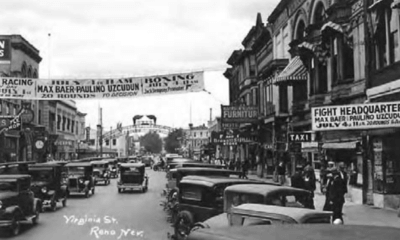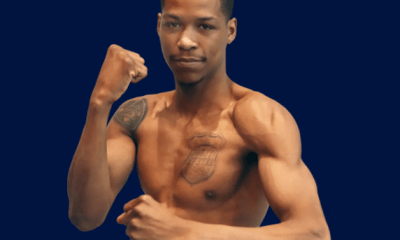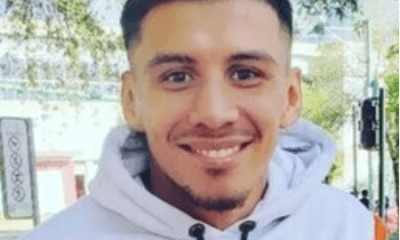Featured Articles
A Cornucopia of Accolades for Venerable Sportswriter Jerry Izenberg
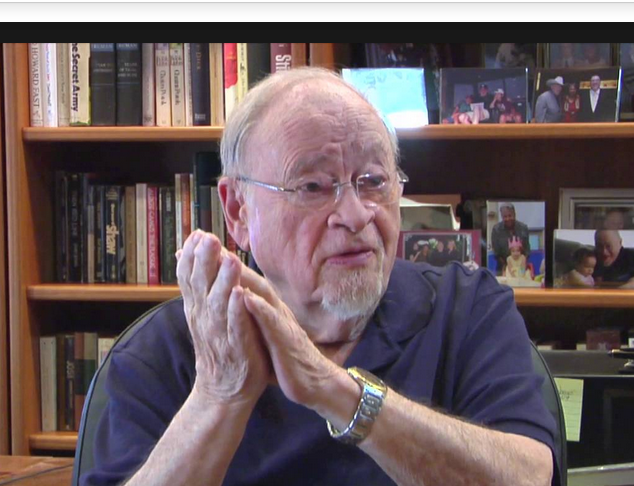
Ponder this for just a moment: Jerry Izenberg has written about sports for seventy-one years. No, this isn’t a misprint.
Behind a righteous conscience, a clear mind and a cool hand, the 91-year-old New Jersey native and columnist emeritus for the Newark Star-Ledger has pounded out stories from every venue, both near and far, and on every major sport and that includes boxing which he holds near and dear and has been a great story-telling device.
“Most fans like it but don’t understand it. Some writers take advantage of the fact that because so many fans keep looking and waiting for a knockout. It’s the easiest sport for a writer to fake,” said Izenberg of the sweet science. “But for serious writers, it’s the best…just three people inside the ring and a cut man and a trainer in each corner…when two great fighters meet, they produce at one and the same time the most brutal yet graceful ballet requiring skill, courage and the most determination in all of sports.”
Izenberg, the author of more than a dozen books including “Once There Were Giants: The Golden Age of Heavyweight Boxing,” has come across many interesting souls while traveling the globe dissecting the fight game, but one fighter in particular, a three-time heavyweight champion, caught his fancy.
“Muhammad Ali was someone I knew from the 1960 Olympics. He was my friend but he became my genuine friend the morning after he won the title from Sonny [Liston]. That was shortly after the press conference when as a world champion for just 24 hours, he announced his belief in a form of Islam then associated with Elijah Muhammad named the Lost Found Nation of Islam and colloquially known as the Black Muslims,” he said.
“It was the first time most writers had been exposed to Ali’s (then Cassius Clay) membership in the group. I may have been the first to defend his right to whatever religion he followed and whatever name he chose to be called. He respected the fact that I made it a priority to find out who the hell this guy was and that I would be writing about even after the day he died. We became close friends for about 50 years. Before that he had testified at a New York State Legislature hearing about boxing. A bunch of us were ticketed to return to Manhattan on the midnight train.”
Izenberg explained how the friendship really took off:
“I was in my hotel room writing my column when he walked in at about 2 p.m.”
“Man, I am so tired. Are there any empty rooms in this hotel?”
“Take my bed,” I offered. “I promise to type quietly.”
“After he beat Sonny, [February 1964], he started to tell everybody, ‘This man, this man gave me shelter and his bed when I had no bed.’ And I would say, ‘that was only because I didn’t know who the hell you were.'”
“And then we’d both laugh. It was a great friendship to the point where I still have trouble saying ‘was’ these days instead of ‘is.’ I miss him very much.”
“I always wrote about the human condition which you would be wise to consider whether it is admirable or deplorable. When I was probably the first to defend Ali’s constitutional rights, they broke out my car’s windshield with sledge hammers and mailed me dog feces and alarm clocks disguised as bombs,” he said. “When I explained the reasons behind [Colin] Kaepernick’s Star Spangled Banner kneel we got hundreds of negative emails – none of which noted that I had carefully explained exactly what he said about why he was doing it and it had nothing to do with patriotism. I listened to exactly what he explained about a horrible wave of police brutality and I wrote what he said.”
Izenberg, a graduate of Rutgers University Newark, shot back at the critics. “The trouble with these snap decisions by these knee-jerk detractors was that most of them wrapped their criticism in a tsunami of emotions but offered only a scintilla of facts,” he said.
John Feinstein, a contributor to the Washington Post and Golf Digest and the author of two of the best-selling sports books of all time, added his two cents on Izenberg: “I think Jerry’s done a remarkable job through the years of staying current, of remaining a REPORTER which many columnists – particularly older ones – fail to do,” he said. “He rarely falls back on, ‘back in the day, when I was a young reporter.’ His work always feels as if it’s fresh, not a rehash of material from years gone by.”
The prolific Feinstein spoke about Izenberg’s deft touch: “I always thought of Jerry as, ‘the quiet columnist.’ He never called attention to himself in press conferences or in the media room at big events,” he said. “He’d just sit there, puffing on his pipe, and turn out something which would cause me to say, ‘gee, I wish I’d thought of that,’ when I read it. I’ve always said the guys who are the best at what they do don’t have to tell you they’re the best at what they do. Jerry falls into that category.”
Izenberg reflected on his bar mitzvah at age 13, a rite of passage for Jewish boys. “My bar mitzvah ceremony was supervised nearly eight decades ago by a rabbi named Joachim Prinz. He had escaped Nazi Germany, rode a Freedom Bus during the beginning of the civil rights movement and introduced The Rev. Martin Luther King at the National Mall [in Washington, D.C.],” he said. “He was the one who called my attention to the Hebrew phrase “Tikkun Olam” – Hebrew translation: Repair the world.” The most modern understanding of the phrase is that you fix the world through the individual human action of each person.”
“So, I write what I believe, even if my soapbox is limited to a field of end zones and foul lines and ring posts,” Izenberg added. “My work is the residue of my father, who set the standard, my teacher, Stanley Woodward, who gave me the tools and Dr. Prinz, the rabbi who kind of deputized me.”
Former New York Times sports columnist Harvey Araton who wrote about the odd coupling of Ali-Liston II and Lewiston, Maine, in a story re-visited on these pages, noted that Izenberg, a longtime friend, wasn’t swayed by popular opinion.
“He wrote what he thought. If that went with the wind, fine. If not, too damn bad. On his favorite topics (boxing, football, horse racing, baseball), he knew that he knew more than most and wrote with that level of authority,” he said. “In other subjects, his eyes and ears were focused on what he could learn and report. He was old school all the way, not writing for clicks or retweets or to land a TV deal by manufacturing (fake) anger. Come to think of it, Jerry was one of the first crossover print sports guys when he appeared on Sports Extra on Sunday nights on Channel 5 in New York (if memory serves correct).”
“If you knew Jerry, you could actually hear his (cantankerous) voice in his column. When I was in college and grad school, working on the desk of the Staten Island Advance, a sister paper to Jerry’s Newark Star-Ledger, we’d run his column,” he said. “Much too brash and a little stupid, I’d ready my editor’s pen to see where I could make some changes and prove my worth. Whatever changes I’d make, my boss would undo. He’d tell me, “You don’t f*** with a voice and style as distinctive as Izenberg, OK?” Jerry had his pet lines he would use, or overuse, like ‘herniated snail’ to describe a slow runner, or’ Gomorrah-by-the-desert,’ meaning Vegas. But you never knew what delightful turns of phrases would turn up in his copy, though seldom, if ever, did they obscure the message.”
Araton noted Izenberg’s affection for the Garden State: “Many may not remember that Jerry was not only a Jersey guy, though his love for the state in general and Newark in particular was indisputable,” he said. “But in the late 70s, his columns were also picked up by the New York Post, in large part because of his friendship with Jerry Lisker, the Post sports editor, who was also a big boxing guy. So, in an era of many mega-bouts, Jerry’s voice was heard in what was considered by many to be the city’s best sports section.”
“One last thing,” said Araton. “About 9-10 years ago, I wrote a piece on the failure of the (now defunct) Newark Bears, or at least a remake of the team as an indie baseball team, to thrive despite a lovely little stadium the city and county had built,” he said. “The story explores whether soccer was the more realistic pursuit. Jerry had championed the baseball cause in his columns. If you read Jerry’s quote, you can see his irascible side but also his honesty; he says that people told him he was living in the past, thereby acknowledging that possibility.”
Here is a link to that story.
https://www.nytimes.com/2011/08/22/sports/baseball/did-newark-bet-on-the-wrong-sport.html?smid=nytcore-ios-share
One of Izenberg’s biggest fans is Japan Forward sports editor Ed Odeven who penned the well-received “Going 15 Rounds With Jerry Izenberg.”
“Jerry’s prose,” said Odeven, “has never been saturated or bogged down with too many statistics or analytics…His stories are always anchored by human drama and a novella-like structure (with a beginning, middle and end).”
“Jerry was a progressive thinker decades ago in telling the plight of African American athletes and Historically Black Colleges and Universities (his visit to Grambling University, where he chronicled football coach Eddie Robinson’s squad, which produced his groundbreaking story in True in 1967). He was far ahead of the curve in recognizing that Black and Latino athletes were rising stars and a significant part of the nation’s sports culture,” continued Odeven.
Ira Berkow, who spent countless hours ringside with Izenberg, echoed that observation.
“The aspect of the significance of race in sports was late in coming for many sportswriters,” noted Berkow, the longtime sports columnist for the New York Times. “Not for Jerry. He was clearly in the forefront of the discussion.”
Boxers are more open and introspective than other athletes according to Izenberg. And when the best of the best step into the ring, it can be magical.
Izenberg recounted two classics at which he sat ringside. One took place in 1975 in the Philippines and the other in 1985 at Caesars Palace in Las Vegas.
“I’m 91 now and I would like to say Cain-Abel but a camel died on the highway that day so I was late getting there,” he said. “The best fight of any weight – Ali-[Joe] Frazier in Manila…15 rounds of hell.
The best way I can sum it up is with the lead I filed 20 minutes after the fight ended: “Muhammad Ali and Joe Frazier did not fight for the WBC heavyweight title here last night. Nor did they fight for the heavyweight title of the planet. They could have fought inside a telephone booth on a melting ice flow and had all the room they needed. “They fought, instead, for the championship of each other. And as far as I’m concerned, they could fight forever and the issue would never be settled.”
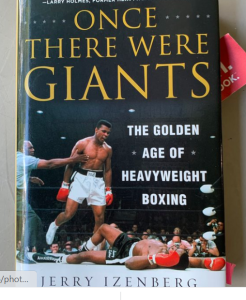
The second classic that stands out in his mind is Hagler-Hearns. “The best first round at any weight,” Izenberg said. “Hearns won the explosive round, drawing blood from Marvin’s forehead but when Hagler didn’t take one step backward, he won the fight then and there.”
For Izenberg, there have been some changes in boxing and not always for the good.
“Now when young boxers are told to hit the heavy bag by their trainers, the response is: ‘Okay, but will I ever play the guitar again?’ Yes, we have a shortage of gifted fighters but so many of the ones we do have are in desperate need of gifted teachers,” he said.
And with that, it appears the sport has also lost some of its shine. “Yes, because now it features more self-styled entertainers than fighters. The most exciting moment in all of sports used to be when a slight murmur began from the back of the arena and then a crescendo that grew louder and louder as they approached the ring,” said Izenberg of the excitement of a big fight. “It was clear they had come to fight. Now we have smoke and mirrors, fake fog and an army of hangers-on for the walk to the ring large enough to double as extras in a cinematic re-creation of Exodus. The best fighters we have don’t need the theatrics. I wish we had more of them.”
Izenberg, who turns 92 on September 10, has been honored many times. Is there one that stands above the rest?
“I’m in 15 Halls of Fame but that’s not it. I won the Red Smith Award and that’s not it because when I was at the [New York] Herald Tribune my desk was next to his and I learned a lot and that was worth more than any award,” he said.
“I was, for a time, fairly regular on Irish radio and one day the host interviewed me as what he called an important journalist. He said with all the awards, why is it you never won a Pulitzer? Nobody had ever asked me that.
“I told him that when the Star-Ledger was the eighth largest Sunday paper in the country, we had an audience of over one million. On weekdays it was around 600,000. So, if just one of every six readers read Jerry Izenberg during the week I had an extended family of 100,000. If they came back because they liked what I wrote, well, hell, the Pulitzer doesn’t mean much when measured against that.”
Hall of Fame boxing writer Thomas Hauser weighed in: “He should have won the Pulitzer Prize for Commentary long ago, but the jury that designates Pulitzer winners is journalism’s answer to boxing’s world sanctioning organizations with the New York Times playing the role of Don King.”
“If we’re lucky,” said Hauser, “Izenberg will write his memoirs someday. But that would be the crib notes version. To fully appreciate his work, one has to have read his columns; day after day, week after week, year after year. Ten thousand columns crafted over the span of more than four decades,” he said.
“Indeed, if the Newark Star-Ledger is interested in performing a true public service,” continued Hauser, “it will assemble those columns in multi-volume sets, put the sets in major libraries across the country, and give Izenberg a set to take home with him.”
To comment on this story in the Fight Forum CLICK HERE
-

 Featured Articles3 weeks ago
Featured Articles3 weeks agoAvila Perspective, Chap. 330: Matchroom in New York plus the Latest on Canelo-Crawford
-

 Featured Articles2 weeks ago
Featured Articles2 weeks agoVito Mielnicki Jr Whitewashes Kamil Gardzielik Before the Home Folks in Newark
-

 Featured Articles4 weeks ago
Featured Articles4 weeks agoOpetaia and Nakatani Crush Overmatched Foes, Capping Off a Wild Boxing Weekend
-

 Featured Articles3 weeks ago
Featured Articles3 weeks agoCatching Up with Clay Moyle Who Talks About His Massive Collection of Boxing Books
-

 Featured Articles4 weeks ago
Featured Articles4 weeks agoFabio Wardley Comes from Behind to KO Justis Huni
-

 Featured Articles2 weeks ago
Featured Articles2 weeks agoMore Medals for Hawaii’s Patricio Family at the USA Boxing Summer Festival
-
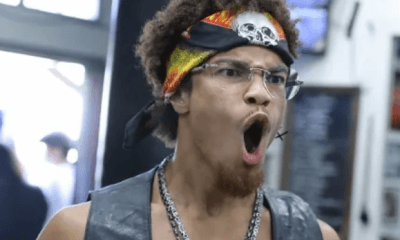
 Featured Articles3 weeks ago
Featured Articles3 weeks agoThe Shafting of Blair “The Flair” Cobbs, a Familiar Thread in the Cruelest Sport
-

 Featured Articles3 weeks ago
Featured Articles3 weeks agoRichardson Hitchins Batters and Stops George Kambosos at Madison Square Garden





